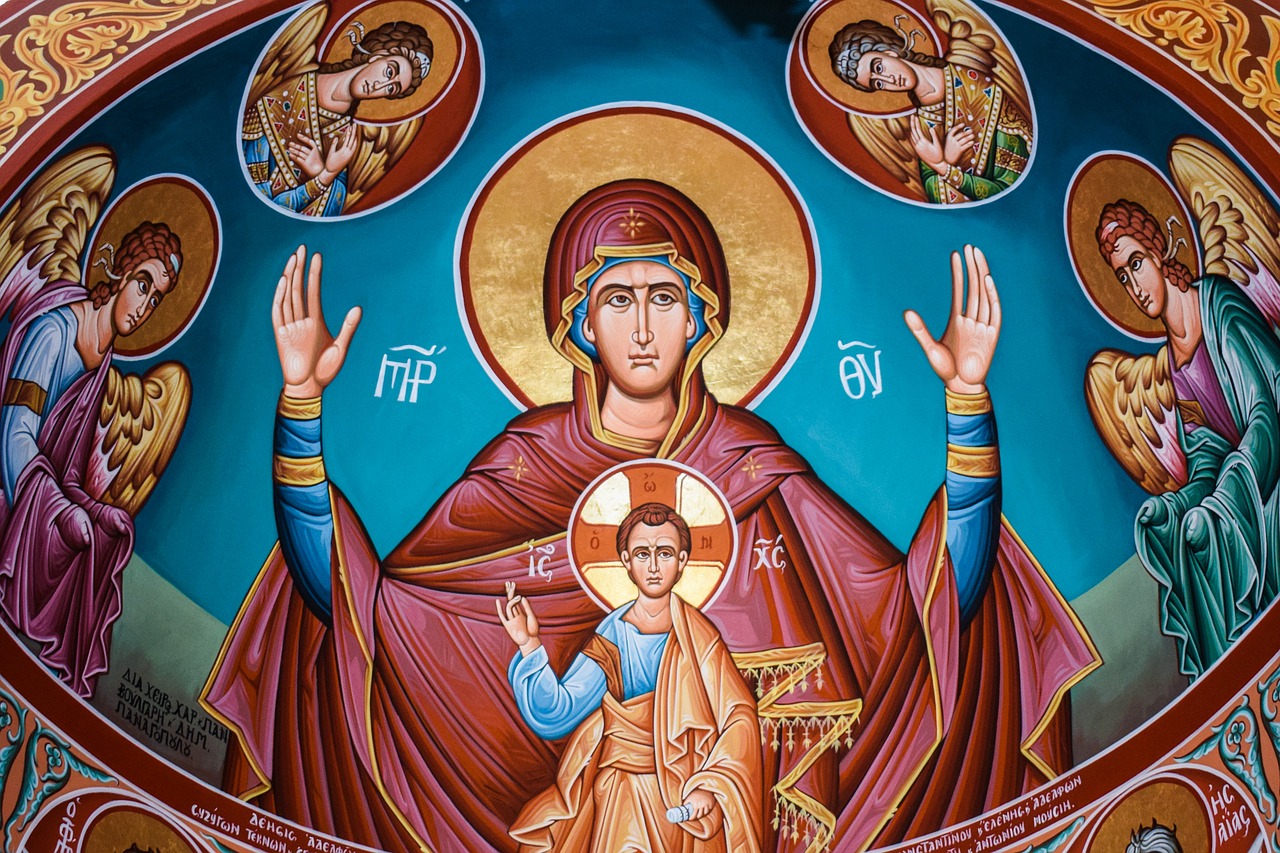There’s something about Mary! No, I am not talking
about a 1998 comedy movie, featuring Cameron Diaz. I am talking about Mary, the
Blessed Virgin, the Mother of Jesus, the Theotokos,
because there is something theologically mysterious about her. Some sects of Christians,
who are obsessed with the sola scripture doctrine,
find it very difficult to acknowledge the Marian mysteries not explicitly
written in the Canonical Scriptures.
Just as Trinity is not written anywhere in the
Canonical scriptures, the Marian mysteries of Immaculate Conception,
Assumption, and Coronation are not written explicitly in the Bible. In fact,
some Protestant Christians even argue if Mary was really virgin, in regard to
interpreting the Greek word parthenos
(Matthew 1:23) and the Hebrew word almah
(Isaiah 7:14).
Obsessive sola
scripture and word game in interpreting biblical Greek and Hebrew words
sure can make us blind to great mysteries that are not explicitly written in
the Canonical Scriptures. In fact, this blindness becomes an obstacle in recognizing
a revelation of the mysteries even when the Holy Spirit makes mysteries in apocrypha into apocalypse.
Certainly, the Catholic Church’s doctrine on Mary is
not only rooted in the Scriptures but also aided by apocalypse of the Marian mysteries through the Holy Spirit. This
particularly the case with the Catholic doctrines on the Marian mysteries of Immaculate
Conception (Ineffabilis Deus, 1854),
Assumption (Munificentissimus Deus,
1950), and Coronation (Ad Caeli Reginam,
1954). Though none of these are written
anywhere in the Bible, the Holy Spirit has revealed these truth in apocrypha to the Church in the fullness
of time.
It is very important to understand that these Marian
mysteries are ultimately about Jesus, the Son, to whom she gave the virgin
birth, and with whom she suffered and sorrowed greatly. There would not be
anything special about Mary, if she were not for Jesus. If Mary were not for
Jesus, from her own conception, Immaculate Conception, she would not be the Theotokos and, therefore, would not
suffer and grieve for him. Then, she would not be Assumed into heaven to be
reunited with him and to be crowned as the Queen of Heaven and All Saints.
The last two glorious mysteries of the Holy Rosary,
Assumption and Coronation of Mary, cannot be understood without Immaculate
Conception. Not to mention, these three Marian mysteries are revealed truths
out of apocrypha to the Catholic
Church by the power of the Holy Spirit, as to reassure the truth in Jesus’
statement on the Holy Spirit in John 14:26. It must be God’s will for us to
deepen our Christological appreciation in connection with Mariology.
Mary was conceived in the womb of Anna without any
trace of Original Sin, though she was conceived through an intercourse of Anna
and her husband, Joachim, as revealed into the doctrine of Immaculate Conception,
based on Protoevangelium of James. In order to fulfill what is said in Genesis
3:15, God the Father had a special favor for Mary even before she was
Immaculately conceived in Anna’s womb, so that His Son, can be made into
theophany to us in the human flesh of Jesus to dwell among us, as written in
John 1:1, 14. It is because God so loved us (John 3:16), though we have
offended Him grievously. And, at Annunciation, Mary conceived the Son of God
while she was virgin by the power of the Holy Spirit (Luke 1:35). Though it was
a total surprise to her, Mary obeyed this will of God for her to serve as the Theotokos and accepted her mission as
the mother of Jesus (Luke 1:38).

The obedience of Mary to God’s will (Luke 1:38) led
her to bear great suffering, as Simeon prophesized as a part of redemptive
suffering (Luke 2:34-35). Mary had to see her dearly beloved Son die through excruciating
agony on the Cross (John 19:25), and her sorry is well-depicted in the image of
Pieta. However, Mary’s sorrows and grief gave their ways to joy as she was
reunited with her risen Son (Spiritual Exercises of St. Ignatius of Loyola,
Fourth Week, First Contemplation; St. John Paul II, Address to General
Audience, May 21, 1997). Upon this reunion, however, her Son, Jesus, returned
to the Father in heaven through Ascension. Following this separation, Mary,
together with the rest of the disciples of her Son, received the Holy Spirit on
Pentecost, and she became the Mother of the Church. As the Church has gone
through persecution, she suffered as the Mother of the Church, while disciples
shed their blood, following her Son’s Via
Crusis. Because she was also made into the mother of the disciples by her
Son on the Cross (John 19:27), Mary suffered as her sons and daughters suffered
and gave their lives in following her Son’s way.
God the Father, as well as the Son, knows how
obedient, and therefore, how much she suffered and how she endured all
tribulations. So, as the consummation of her faithful life on earth, as the Theotokos and the Mother of the Church,
she was Assumed into heaven, her body and soul, in order to be reunited with
her beloved Son, Jesus Christ, the King, in glory forever, and to be installed as the Queen
of Heaven and All Saints, thus becoming the object of our hyperdulia
veneration.

Yes, there is, indeed, something about Mary, something mysterious about Mary the Blessed Virgin, gratia plena, Immaculata Conceptio, the Theotokos, Mater Dolorosa, Mater Ecclesiae, as she was made into Regina Caeli upon her Assumption, for her steadfast faithfulness to God’s will, through which God made His only begotten Son, Jesus Christ, available to us for our salvation. Mary is, in fact, inseparable from her beloved Son, Jesus the Christ. Now the Queen is with the King in glory, waiting for the Church to become ready for her matrimonial union in heaven (Revelation 19:6-8, 21:9-21).

No comments:
Post a Comment